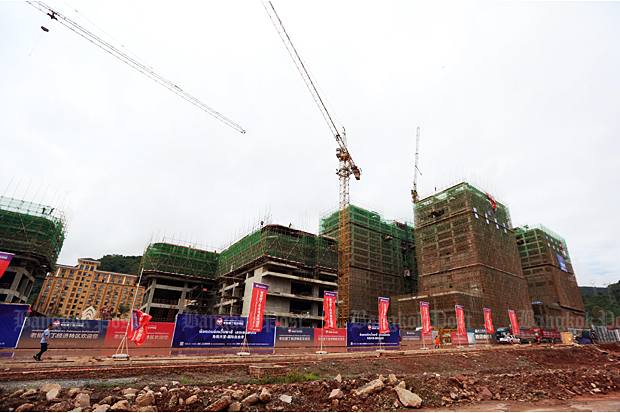
As a transit country, Thailand should play a significant role in helping the neighbouring landlocked country of Laos improve their economic growth to achieve the goals of the 10-year-Vienna Programme of Action (VPoA) for Landlocked Developing Countries for the Decade 2014-2024, according to the programme's chief.
The international body's request was made during the two-day Euro-Asian regional meeting to review the VPoA, held at the UN headquarters in Bangkok on Monday and Tuesday. Senior government officials, experts from landlocked developing countries (LLDCs), transit developing countries and development partners gathered to identify signs of progress as well as challenges to implementing the VPoA in Europe and Asia.
Fekitamoeloa 'Utoikamanu, United Nations Under Secretary-General and High Representative for the LLDCs, least developed countries (LDCs) and small island developing states (Sids), said Laos has shown positive economic growth in recent years and it could be able to escape from its classification as an LDC within three years if its economic ratio continues to improve.
To further develop its growth, it is necessary to have the support from transit countries like Thailand to help strengthen its economy.
"As the transit country, Thailand should help Laos improve transportation through the Asean region under bilateral agreement between the two countries. Transit arrangement should be the first priority. Partnership cooperation in other areas like infrastructure development and ICT connectivity is needed as well," she said.
With members from 32 deadlocked countries, the VPoA offers a holistic approach to improving the integration of LLDCs into the global economy through the following priority areas: fundamental transit policy issues, infrastructure development and maintenance, international trade and trade facilitation, regional integration and cooperation, structural economic transformation and means of implementation.
The midterm review has focused on the programme's implementation and examined gaps, challenges and other necessary recommendations to help its target countries meet their goals within the next five years. Attendees of the session also discussed how to promote economic infrastructure development, ICT connectivity, sustainable energy and international trade.
Ms 'Utoikamanu added that a political declaration is expected to be given by the end of this year, addressing the key contributions they should make to achieve their target.
Reflecting on development at the halfway point of the programme, she said there are signs of progress in certain areas. However, there is still work to be done within the next five years, especially regarding global trade development.
"Those landlocked countries contribute less than 1% of global trade, but we hope to achieve 4%," she said.
The real growth in gross domestic product for the LLDCs declined to 2.8% in 2016, down from 5.6% in 2014. The LLDCs continue to account for less than 1% of the global merchandise trade and the exports remain undiversified, comprised mainly of primary commodities.
Despite the continued efforts to expand and upgrade the transport infrastructure, inadequate quality and deficiencies in the physical infrastructure remain. Access to electricity in the LLDCs has increased but remains below the world average while costs of ICT services in the LLDCs remain high.
Thani Thongphakdi, Deputy Permanent Secretary of Foreign Affairs, said the Thai side reaffirmed its commitment to promoting development cooperation -- bilaterally, trilaterally and multilaterally -- with LDCs, LLDCs and Sids to support them in their endeavours to overcome specific development challenges through sharing knowledge and best practices, including the late King's Sufficiency Economy Philosophy (SEP).